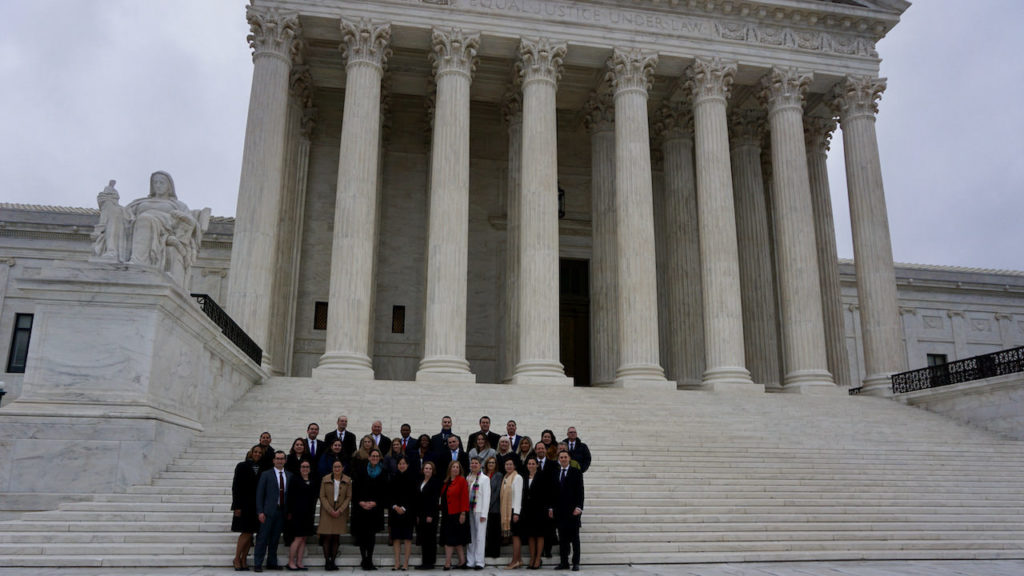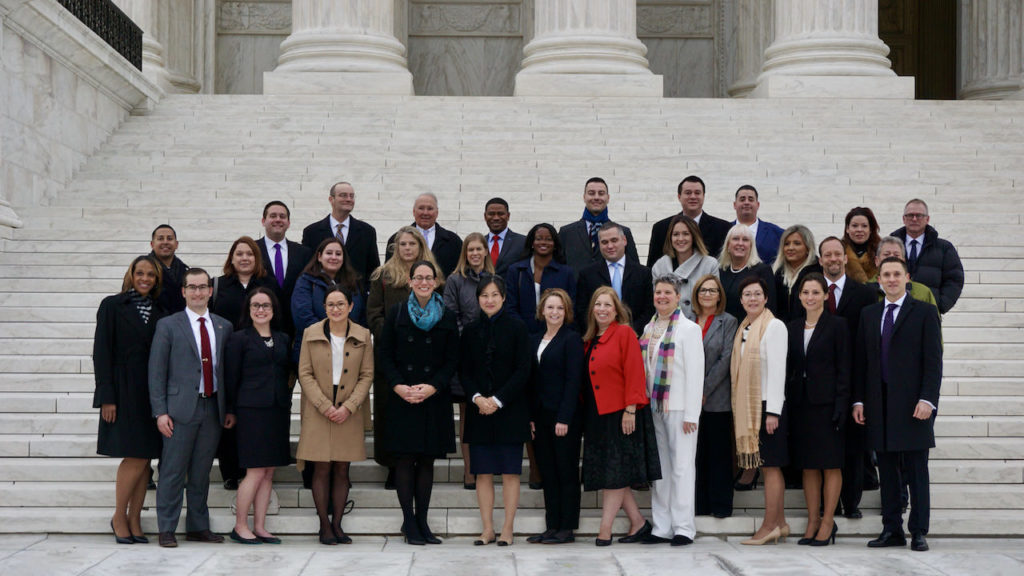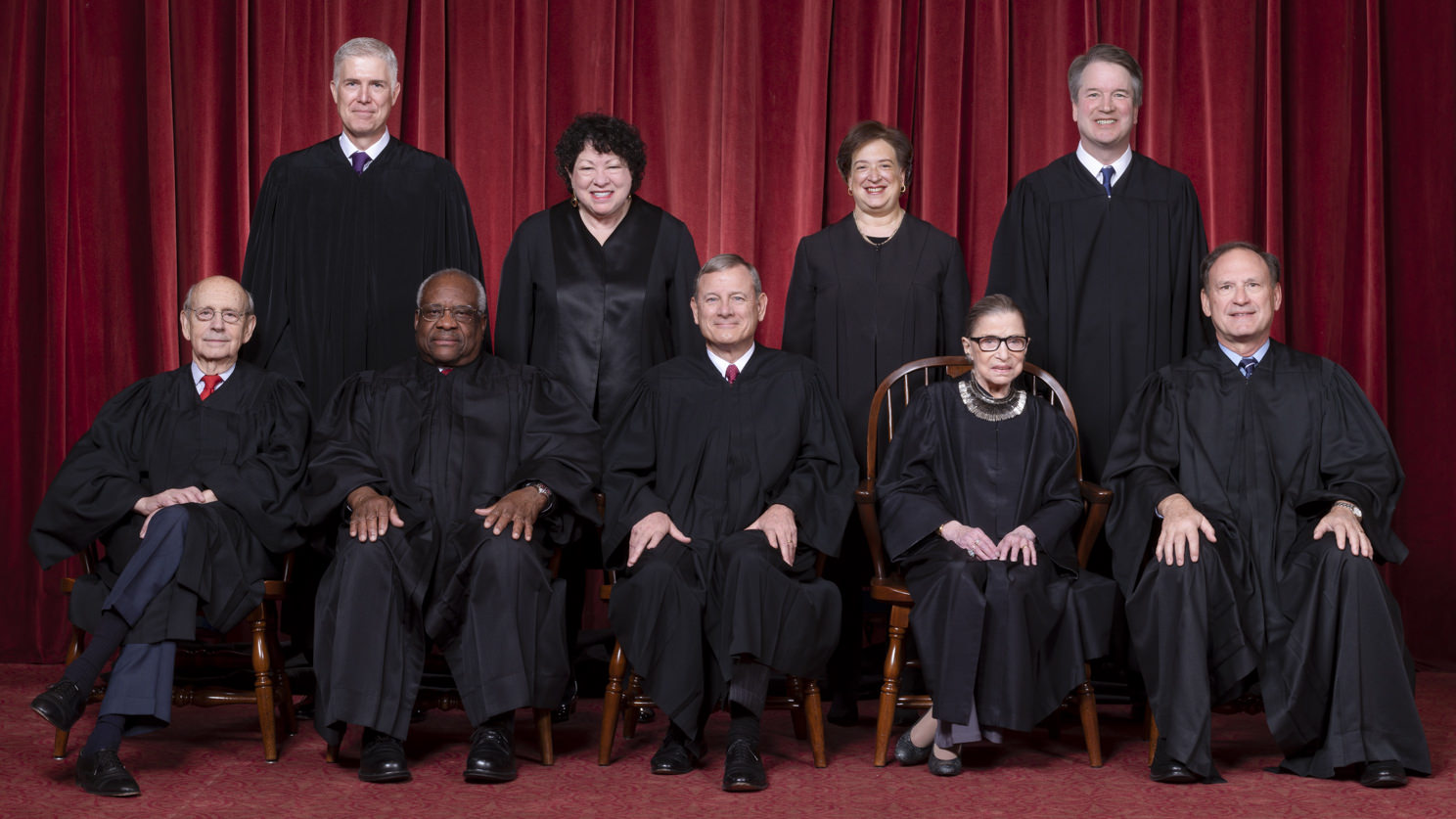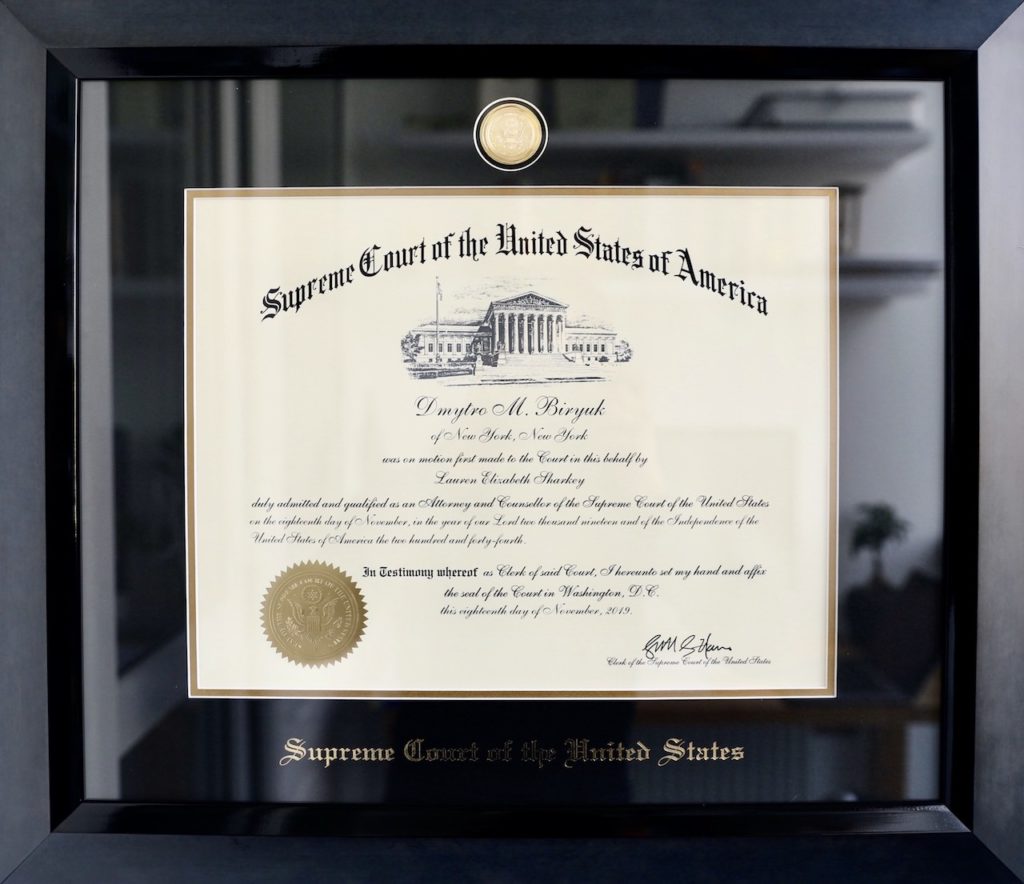Discover how to get admission to the bar of the Supreme Court of the United States (SCOTUS)!
Are you studying for or holding a JD or LLM degree?
Have you passed an NY bar exam or any other American bar exam?
Would you finally like to get a bar admission of the US Supreme Court?
Find out here how you can achieve this ultimate bar qualification.
US Law Degree Admission Perspectives
For any JD graduate, the final destination is taking and passing a bar exam (e.g., the NY bar exam). For foreign LLM graduates, in contrast, the only goal is often just the LLM degree itself.
Does a US LLM degree make any sense without an NY bar admission? Having no NY bar admission, would you feel your US law journey to be complete?
In my opinion, no. This is at least what I felt prior to passing the NY bar exam. This is absolutely not to say that an LLM has no value of its own, though. As a matter of fact, any LLM does carry a lot of benefits (even without the NY bar license). For instance, legal research and writing coupled with business law courses (such as contracts, business associations, and corporate finance) of any US law school are invaluable. It can only be debatable which LLM grants a better perspective.
The question is: Why not use the LLM along with those skills? They can be more valuable than any property or other assets. If you have spare funds, for example, would you not wish to multiply them? You can deposit money on a savings account, invest into shares/bonds, or finance your own business. If you just hide your cash and never use it, you may ultimately regret.
The same apparently holds true about your LLM degree, especially if you are a foreign lawyer. This is because US lawyers usually get admitted right after their JD studies. To this end, American JD graduates normally take a bar exam.
Thus, the wisdom, mastery, and joy lie not as much in holding an LLM degree as in using it. To put your LLM into good use, start from passing an NY bar exam. Having been admitted, practice the US law, even if you are outside of America.
Long-Term NY Bar Exam Result
Your NY bar perspectives depend on your admission status.
At a rookie stage, if you are just wondering how to get an NY bar admission (perhaps, going to sit for NY bar exam), aiming for a bar admission of not only the state but also the US Supreme Court will boost your inspiration and motivation through the roof.
At a pro stage, if you are already admitted to practice law in New York, California, Florida, Texas, or any other state, then getting a bar license of the US Supreme Court will raise your qualification to the top.
Becoming a US attorney is surely a great feat. This doesn’t, however, have to be the end of your legal qualification. In fact, your NY bar exam preparation may, for example, result not only into your NY bar admission. As in my case, passing the New York State bar exam may ultimately allow you to get a bar admission of the Supreme Court of the United States.
What can be a better bar exam result in the long run?
For the highest court admission, would you need to consider any sound bar reviews, find the best bar exam prep course, and pass NY bar or another US bar exam? Any MBE, essays, MPT, MPRE, or anything else?
Luckily, not! Getting the Supreme Court bar license is much easier than researching the best bar prep courses, learning bar exam study materials, passing the bar exam, and getting admitted to the NY bar.
Such a SCOTUS admission perspective applies not only to New York attorneys, but also to attorneys admitted in any state, for example, California bar.
SCOTUS Bar Admission Reasons
What does it practically mean to be admitted as an attorney and counselor of the US Supreme Court?
Admittedly, very few American — let alone foreign US-qualified — attorneys ever get a chance to appear before the Supreme Court.
This is because the Court hears only a tiny amount of cases. In particular, the Court receives approximately up to 8,000 petitions for a writ of certiorari each term, but grants and hears oral argument in only about 80 cases. That’s only ca 1% — too little for so many US-admitted lawyers worldwide.
In this connection, someone (especially, a lawyer without the SCOTUS bar admission) might ask you: Why would you get a US Supreme Court bar admission if you are not going to practice there?
There are numerous reasons (benefits) as follows.
- The superior bar admission inspires and motivates you as a lawyer. Some values have only spiritual meaning. Inspiration and motivation, for example, foster progress. Raising legal qualification, in particular, urges you for better lawyering. After all, the Supreme Court sets the final precedents ruling all over the United States. Many of them were landmark cases we all studied in US law school.
- Who knows, you may eventually get a chance to represent a client at the Supreme Court. In such a case, you will be ready to act right away, using your SCOTUS bar admission. You will be already qualified to argue before the Court.
- You can hardly ever get a chance even to visit the highest US Courtroom (not only its building). So, how about doing this at least once in a lifetime?
- As a member of the SCOTUS bar, you are eligible to sit in a reserved section of the Courtroom. The SCOTUS-admitted attorneys enjoy special seats for the Court hearings and decision announcements. Such a privileged (so to speak VIP) seating allows skipping the public seating line. This is especially useful in high-profile cases. Moreover, with the Courtroom seating elevated, the bar section chairs conveniently hold you just behind the arguing attorneys. This allows for close view of all actions. Remarkably, the SCOTUS-bar-admitted attorneys enjoys this seating privilege even after the SCOTUS began an online lottery for seating at its big cases.
- The SCOTUS bar members may access the Supreme Court’s library, under the US Supreme Court Rule 2. Having gotten the SCOTUS bar license, you would be able to access, research, and analyze the highest court library.
- The SCOTUS bar admission would ultimately upgrade your professional credentials. It would, for instance, turboboost your resume/CV, website, social media (e.g., LinkedIn, Facebook, and Instagram), attorney directory (e.g., Avvo), and other profiles.
- Check out the supreme preparation: what attorneys go through before facing the nine. Evidently, any SCOTUS experience is unforgettable. It’s truly worthy.
- Finally, attorneys comment on their SCOTUS bar admission with excitement, like this (as you can see from another SCOTUS bar admission ceremony): “I am a proud American and I’ve had non-stop chills ever since… Being able to meet Chief Justice Roberts was amazing, it was surreal. It was a great thing to do for my future… You never know where it might lead and … it was an honor to join the Supreme Court Bar.” By the way, I can personally attest to this “surreal” pleasure of personally meeting Chief Justice Roberts in our admission ceremony. So, you, perhaps, have a chance to meet him, too.
Aren’t these SCOTUS bar admission perks admirable?
To heat up your interest, let me quickly share my impressions.
SCOTUS Bar Admission Memories
Admission to the US Supreme Court was beyond my imagination. It was the ultimate qualification a lawyer could dream about. It fills your mind with a feeling of completeness.
In the morning of November 18, 2019, we slowly walked from Hyatt Regency Washington on Capitol Hill to the US Supreme Court building. The latter is located just a few blocks away from the US Congress and other historic American establishments in Washington, DC.
It was uplifting to meet some other members of the New York State Bar Association (NYSBA) from different places. They included lawyers and their families from other states. We all gathered together to enter the nation’s highest court.
Here’s how our NYSBA Supreme Court admission group looked like:

Just in case you need a closer look, here we go:

Luckily, we managed to receive our SCOTUS bar admission in 2019 (without any masks). In view of the subsequent pandemic restrictions, it is uncertain if and when things will get back to normal.
Walking up the 44 grand steps of the Supreme Court building was magnificent. Passing beneath the “Equal Justice Under Law” engraving at the top was astonishing. Court lobby and halls were full of history…
To observe the admission ceremony, only one guest per admittee was allowed into the Courtroom. Children under six years of age were not allowed in the Courtroom. Electronic devices, purses, bags, or backpacks were prohibited. No photos were allowed inside the Courtroom. Any cameras had to stay in the holding room during the ceremony. Those policies were strictly enforced.
The Courtroom was really astounding. After we all entered, eight Justices appeared and took their seats at the bench. Justice Thomas politely helped Justice Ginsburg in the Courtroom. It was so heartwarming to witness this all in person.
Most importantly, seeing almost all of the Justices so close was astounding.
Lastly, leaving the Court building by the grand steps was touching as well.
US Supreme Court Justices
We were admitted in open court on oral motion by a member of the bar of the Supreme Court.
From the outset, we expected to see at least one Justice. To our surprise and excitement, however, we were lucky to see nearly all — eight out of nine — Justices of the Supreme Court. Namely, the following Justices appeared in front of us in the highest American Courtroom:
- Chief Justice John G. Roberts, Jr.
- Associate Justice Samuel A. Alito, Jr.
- Associate Justice Ruth Bader Ginsburg
- Associate Justice Neil M. Gorsuch
- Associate Justice Elena Kagan
- Associate Justice Brett M. Kavanaugh
- Associate Justice Sonia Sotomayor
- Associate Justice Clarence Thomas
Can you name which one of the Justices was absent? There is a hint below.
You can see all those Justices on the following photo (credit: Fred Schilling, Collection of the Supreme Court of the United States) from the SCOTUS website:

As you can see, only Justice Breyer was absent during our SCOTUS bar admission ceremony.
Luckily, we saw Justice Ruth Bader Ginsburg (RBG), the Supreme Court’s icon, in the highest US Courtroom. We were just over a dozen feet away RBG. This fact alone is something to be truly proud of. Coincidentally, Justice Ginsburg had Ukrainian roots, too, as her father emigrated from Odesa, Ukraine.
On September 18, 2020, Justice Ginsburg, unfortunately, died at 87. As a result, the Honorable Amy Coney Barrett became the succeeding Supreme Court Justice. Since the Court’s composition now differs for this Justice, we essentially witnessed a moment of the great history.
Among Americans, the US Supreme Court Justices appear to be even more reputable than the US Presidents. Notably, the Justices rule infinitely.
Interestingly, you can see many Justices like stars in SCOTUS sketches.
Below, you will discover how to get a US Supreme Court bar license.
SCOTUS Bar Admission Requirements
To get the SCOTUS bar admission, you need to fulfill requirements of the US Supreme Court Rule 5 as follows.
First, to qualify for admission to the bar of this Court, you must:
- have been admitted to practice in the highest court of any state for a period of at least three years immediately before the date of application;
- not have been the subject of any adverse disciplinary action pronounced or in effect during that 3 year period; and
- appear to the Court to be of good moral and professional character.
Second, you must file with the Court’s Clerk:
- a certificate from the presiding judge, clerk, or other authorized official of that court evidencing your admission to practice there and your current good standing; and
- a completely executed copy of the form (application for admission to practice) approved by the Court and furnished by the Clerk containing:
- your personal statement; and
- statement of two sponsors endorsing the correctness of your statement, stating that you possess all the qualifications required for admission, and affirming that you are of good moral and professional character.
Both of your sponsors must be the SCOTUS bar members who personally know, but are not related to, you.
Third, the documents submitted must demonstrate that you possess the necessary qualifications. You must also sign corresponding oath/affirmation. Finally, you must pay the required fee of $200 for admission to the Bar and a certificate bearing the seal of the Court.
By the way, here’s how that SCOTUS bar admission certificate looks like:

Additional documents and fees may apply, depending on your admission application mode. Under the NYSBA Supreme Court admission program, for example, personal history sheet may be necessary. Also, the total fees may amount to $600, including a pre-registration fee of $200 for admittee and his/her guest as well as the SCOTUS admission fee of $200.
All of the above requirements for admission must be duly satisfied. They are, though, incomparably easier than choosing the best NY bar prep course, studying for the bar exam, and passing the bar exam again.
Prior to admission, the Supreme Court may question any of your qualifications.
If you qualify, the Clerk will notify you of acceptance by the Court as a member of the bar and issue a certificate of admission.
Each admitted attorney (counselor) must, of course, behave rightfully, swear in, and support the US Constitution.
NY Bar Exam Culmination
As you can see, the NY bar exam success can bring you more than one heyday.
To conclude, passing a New York bar exam and getting an NY bar admission may ultimately result into admission to the bar of the US Supreme Court.
With outstanding memories in mind, I highly recommend you to experience such grand feelings in your professional legal career.
Now, it’s your turn to share your NY bar exam perspectives.
If you have an NY bar admission already, what do you think about getting the Supreme Court bar license?
If you are preparing for the NY bar exam, discover how you can pass the NY bar exam confidently and efficiently.


